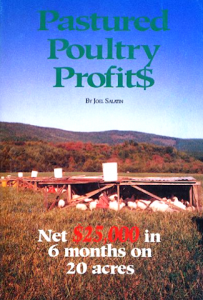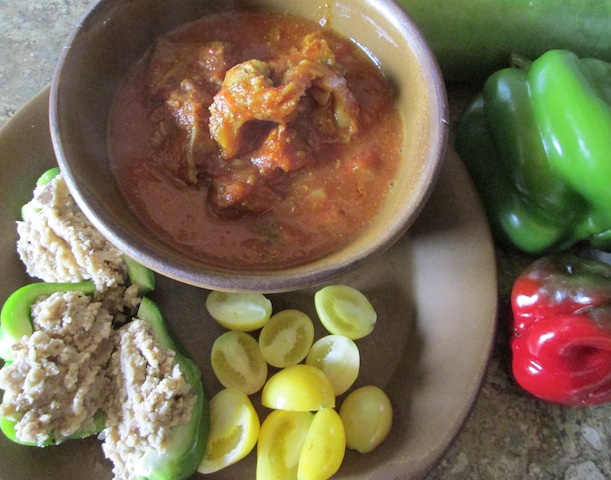
This is a beef curry made from shank meat from our bull. The tomatoes for the curry came from last year's harvest at Gardengate. The yellow pear tomatoes and green peppers came from our garden. Shaen made Baba Ghanoush from the first eggplant he has ever managed to grow.
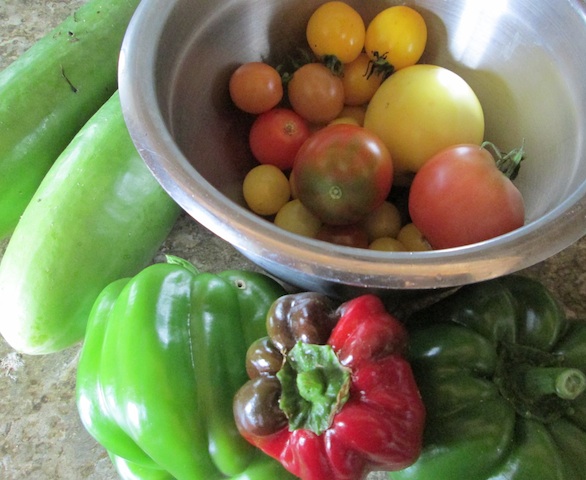
Shopping for dinner is a short walk through the garden to the hoop-house. Everyday something different is ready for picking. This is fresh produce at its best.
I just wanted to share some of our garden harvest for this year. We are still managing to get lettuce and assorted greens from the garden for daily salads. We have been enjoying a range of summer squash and our winter squash are finally coming along. Shaen and the girls have been enjoying freshly dug potatoes from our potato permaculture patch. We have picked this year’s crop of raspberries and sour cherries. A friend harvested our currents so she could make jam. My girls had some wormy, scabrous apples that they thought were the best apples they ever tasted. We are just starting the harvest of tomatoes, peppers, cucumbers and eggplant. My girls love the yellow pear and cherry tomatoes and just pop them into their mouths right off the plant. A weed called mallow is taking over my garden; I am researching the medical uses of this plant, which are many.
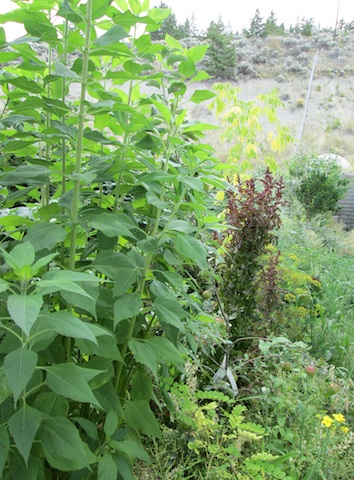
The sunchokes are way over my head. The lettuce has finally bolted but I still can get leaves for salad everyday.
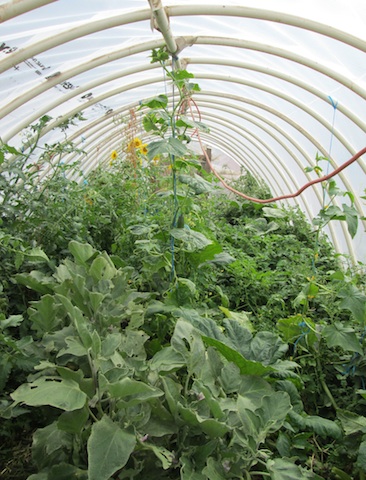
At our elevation the nights are already getting cool. The hoop-house is becoming a warm haven. Shaen realized he has too many plants and will reduce the number next year.
As promised I have let my garden go wild. The only weeding I am doing is in the spring and mostly we are sheet mulching with straw. Shaen wants to try deep mulching for next year to try and reduce the need for watering. Shaen is also letting the plants go to seed for two reasons. One is to have a more of a permaculture garden and the other is to collect seeds for next season.
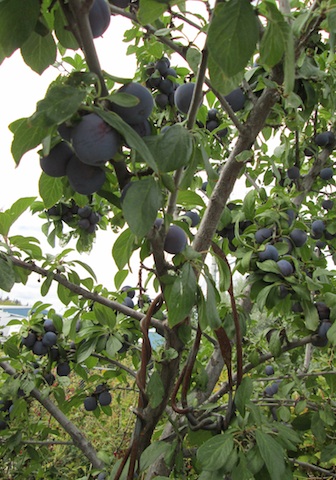
Our plums still need to ripen. Plums are my favorite dried fruit. I have never found a commercial dried plum as good as the ones I dry myself.
We have had a number of wild visitors to our garden this year. We have had a numerous visits from what we think are Black-chinned Hummingbirds. Sonja saw what she thought was a very strange hummingbird. Erika later identified it with her Peterson’s Field Guide to Birds of North American as a Sphinx Moth. The Tree Swallows have disappeared with the last of the mosquitoes to be replaced by the Oregon Junco. The most exciting visitor for Meadows our warehouse cat, was a big green caterpillar with pink stripes and a big spike on its tail. Meadows wisely decided not to eat this strange meal. The caterpillar looked most like a Privet Hawkmoth but they are not found in North America.
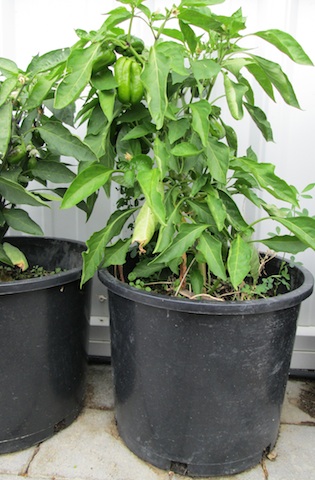
If you have very little space, container gardening can be the answer . Look for the micro-climates around your home. Here are some hot pepper plants.
We have become converts of container gardening. Container gardening allows us to find the micro-climates around our house and use these spaces for food production. At our elevation, frost comes early, and many of our plants are just starting to produce when the season is over. With container gardening, we can move the plants to more protected areas around the buildings. We can move them into the hoop-house if only a few weeks are needed for the harvest, or even bring them indoors to extent the season even longer.

Containers allow you to grow food anywhere. This tomato plant is right in the middle of the GO BOX Storage parking lot. This plant is a real producer.
Updated October 26, 2012: Earlier this week I had special visitor to my garden. I was just about to exit the back door, when there in the Russian Olive was a Burrowing Owl. We both looked at each other in shock. I gasped, those yellows eyes took me in, and the owl flew away. I have only seen Burrowing Owls in pictures, but the long legs and size made me sure I was seeing a Burrowing Owl. It was my understanding that this rare, endangered species was not found this far north. Thanks to the internet I found a video of Burrowing Owls in Lac Du Bois Grasslands Conservation Area.


